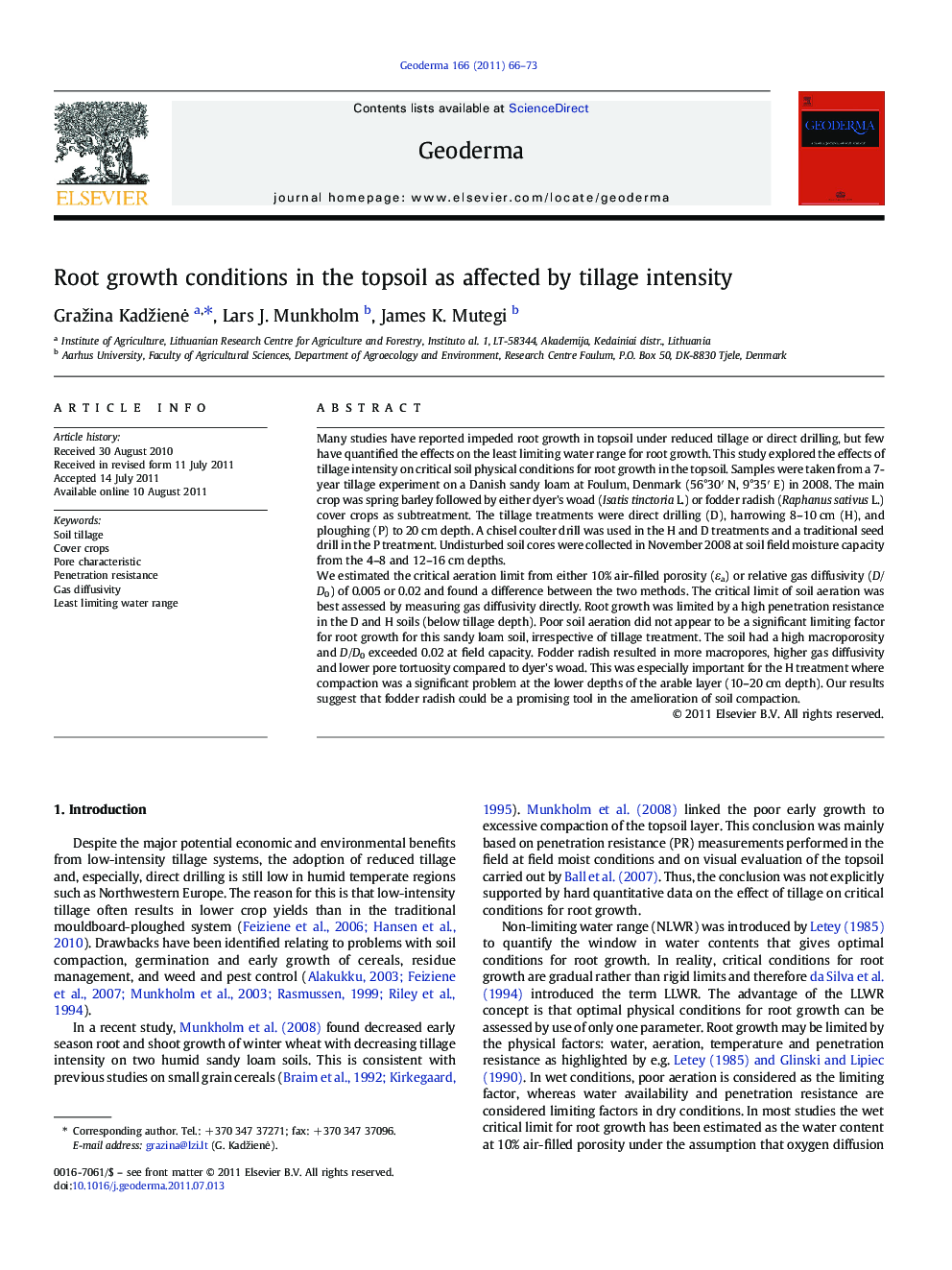| Article ID | Journal | Published Year | Pages | File Type |
|---|---|---|---|---|
| 4574056 | Geoderma | 2011 | 8 Pages |
Many studies have reported impeded root growth in topsoil under reduced tillage or direct drilling, but few have quantified the effects on the least limiting water range for root growth. This study explored the effects of tillage intensity on critical soil physical conditions for root growth in the topsoil. Samples were taken from a 7-year tillage experiment on a Danish sandy loam at Foulum, Denmark (56°30′ N, 9°35′ E) in 2008. The main crop was spring barley followed by either dyer's woad (Isatis tinctoria L.) or fodder radish (Raphanus sativus L.) cover crops as subtreatment. The tillage treatments were direct drilling (D), harrowing 8–10 cm (H), and ploughing (P) to 20 cm depth. A chisel coulter drill was used in the H and D treatments and a traditional seed drill in the P treatment. Undisturbed soil cores were collected in November 2008 at soil field moisture capacity from the 4–8 and 12–16 cm depths.We estimated the critical aeration limit from either 10% air-filled porosity (εa) or relative gas diffusivity (D/D0) of 0.005 or 0.02 and found a difference between the two methods. The critical limit of soil aeration was best assessed by measuring gas diffusivity directly. Root growth was limited by a high penetration resistance in the D and H soils (below tillage depth). Poor soil aeration did not appear to be a significant limiting factor for root growth for this sandy loam soil, irrespective of tillage treatment. The soil had a high macroporosity and D/D0 exceeded 0.02 at field capacity. Fodder radish resulted in more macropores, higher gas diffusivity and lower pore tortuosity compared to dyer's woad. This was especially important for the H treatment where compaction was a significant problem at the lower depths of the arable layer (10–20 cm depth). Our results suggest that fodder radish could be a promising tool in the amelioration of soil compaction.
► We explored root growth conditions in the topsoil as affected by tillage intensity ► For this purpose we applied the least limiting water range concept. ► We found clear differences in estimated critical aeration limits. ► High penetration resistance under reduced tillage was a significant problem. ► Fodder radish positively affected soil aeration parameters.
